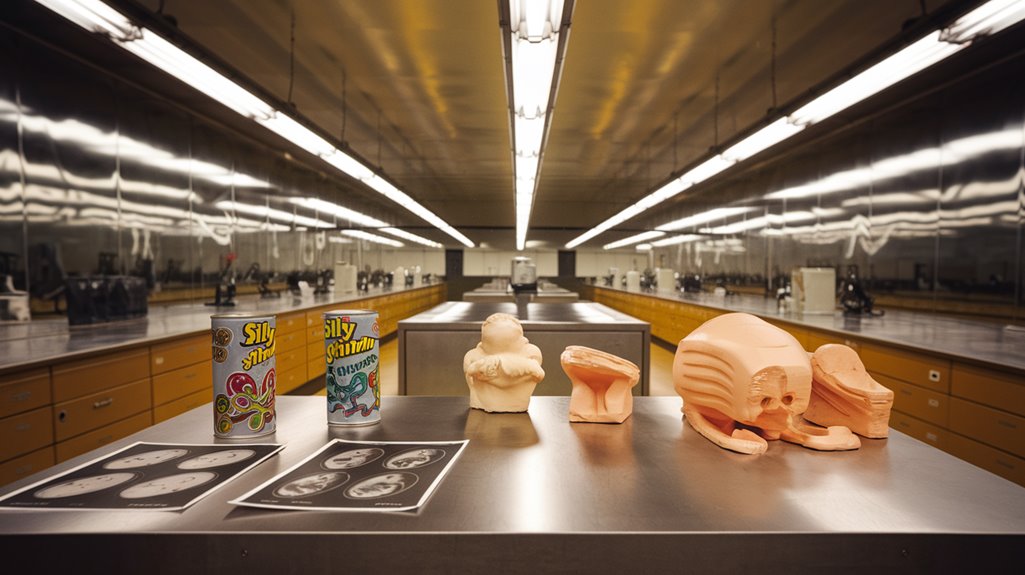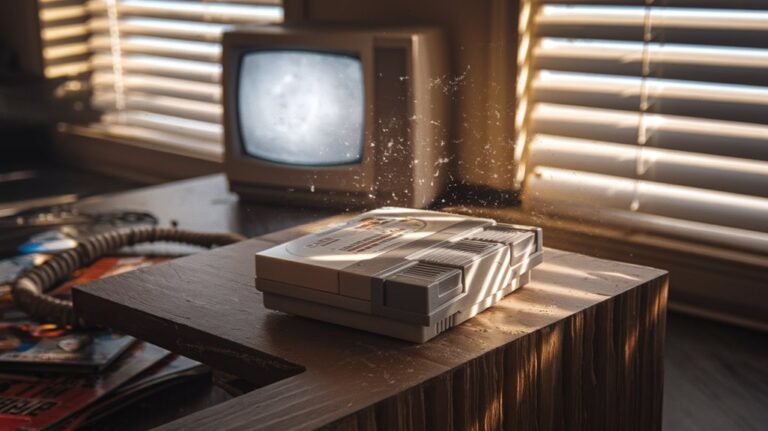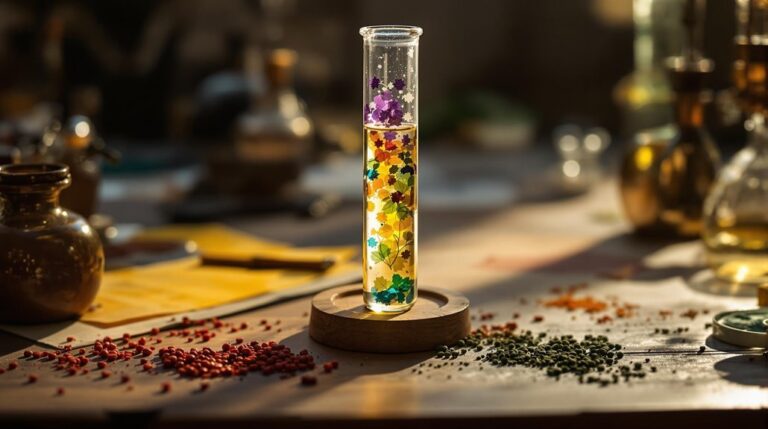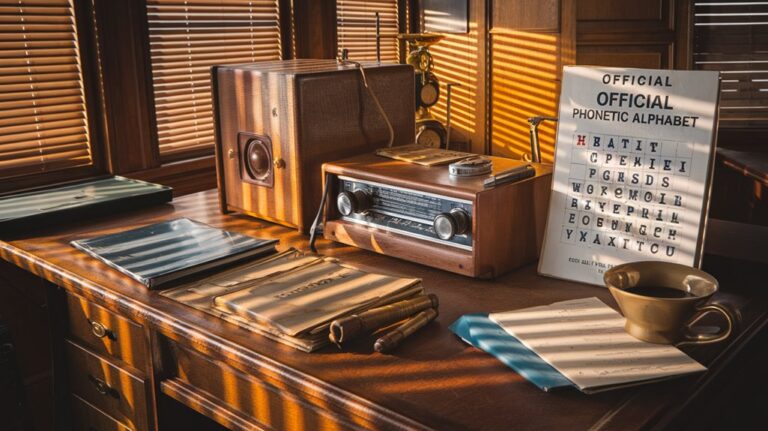Silly String Was Invented for Broken Bones
You might wonder if those colorful strands of Silly String at your last party were actually meant to heal broken bones. While it's true that inventors Leonard A. Fish and Robert P. Cox originally aimed to create a spray-on cast, their failed medical experiment launched an unexpected success story. The path from potential medical breakthrough to party favorite isn't a straight line, and what happened along the way reveals how some of our most beloved innovations come from surprising places.
The Accidental Discovery of a Party Favorite
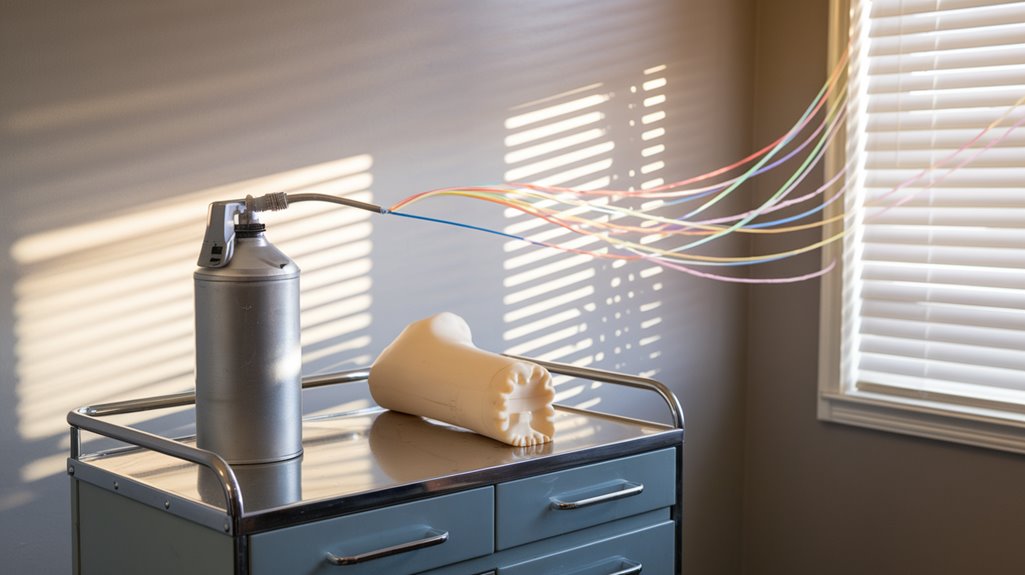
While experimenting with a foam formula for medical casts, inventors Leonard A. Fish and Robert P. Cox never imagined they'd create one of history's most beloved unexpected inventions.
Their initial goal was straightforward: develop a spray-on cast for broken bones. But when they tested different nozzles, something remarkable happened – the foam shot across the room in a perfect string, traveling an impressive 30 feet. After extensive testing, they went through 500 different nozzles before finding the perfect solution.
This playful innovation caught their attention immediately. Instead of dismissing this "failed" experiment, they saw potential in this surprising result. The duo would go on to receive an official patent in 1972.
They modified the formula to make it more colorful and less sticky, transforming their medical invention into something entirely different. When they presented their accidental creation to Wham-O, they couldn't have known they'd just stumbled upon what would become an iconic party toy: Silly String.
From Medical Innovation to Playful Creation
The transformation of Silly String from a medical product to a beloved toy perfectly captures the serendipitous nature of invention.
When inventors Leonard Fish and Robert Cox tested different nozzles for their medical foam cast, they didn't expect to create a string that would shoot 30 feet across the room.
After realizing the entertainment potential, they modified their formula to make it less sticky and more colorful. The product caught Wham-O's attention, leading to successful market tests and eventual production.
As safety regulations and environmental concerns emerged, manufacturers replaced CFC propellants with eco-friendly alternatives. They were forced to change after chlorofluorocarbons were banned in 1978 due to their harmful effects. In 2006, this playful invention found an unexpected military application when it was used to detect tripwires in combat zones.
Today, you'll find Silly String at parties, weddings, and carnivals – a far cry from its intended medical use.
The Car-Freshner Corporation now handles its production, ensuring this accidental invention continues to bring joy to new generations.
Military Applications: Beyond the Fun
Beyond its role as a party novelty, Silly String has emerged as an unlikely hero in military operations, serving an essential purpose in combat zones like Iraq and Afghanistan.
As a remarkable military innovation, troops spray this plastic substance in doorways and dark areas to detect nearly invisible tripwires connected to booby traps and IEDs. The H.O.G. Club at China Lake supported this effort by sending thousands of cans to troops.
You'll find that this unconventional tool can travel up to 12 feet, allowing soldiers to check for threats from a safe distance. The string's ability to instantly settle on hidden wires has proven life-saving in house-to-house combat situations.
Communities have rallied behind this creative solution, organizing donation campaigns to supply deployed troops with this low-cost, yet effective tool. A dedicated New Jersey mother started this initiative after learning about its military applications from her son stationed in Iraq.
It's a prime example of how everyday items can transform into crucial military assets when innovative thinking meets practical needs.
The Science Behind the String
Modern chemistry and physics join forces to create Silly String's mesmerizing spray effect. The string composition relies on a precise blend of polymer resin, plasticizer, and other ingredients that work together during the foaming process.
When you press the nozzle, high pressure transforms the liquid mixture into a continuous strand that solidifies mid-air. The polyisobutyl methacrylate resin forms the primary structural component, comprising 10-15% of the total mixture. The process mirrors how spider silk forms in nature, with amino acid chains aligning during extrusion.
- You'll marvel at how the foam forms a perfect skin, creating those iconic strands
- You'll be amazed by the perfect balance of stickiness that lets it cling without becoming permanent
- You'll appreciate how today's environmentally friendly propellants replaced harmful CFCs
- You'll notice how the lightweight, flexible strands float gracefully through the air
The science behind this playful product showcases how complex chemistry can create simple joy, transforming basic ingredients into airborne artistry.
Key Players in Silly String's Success Story
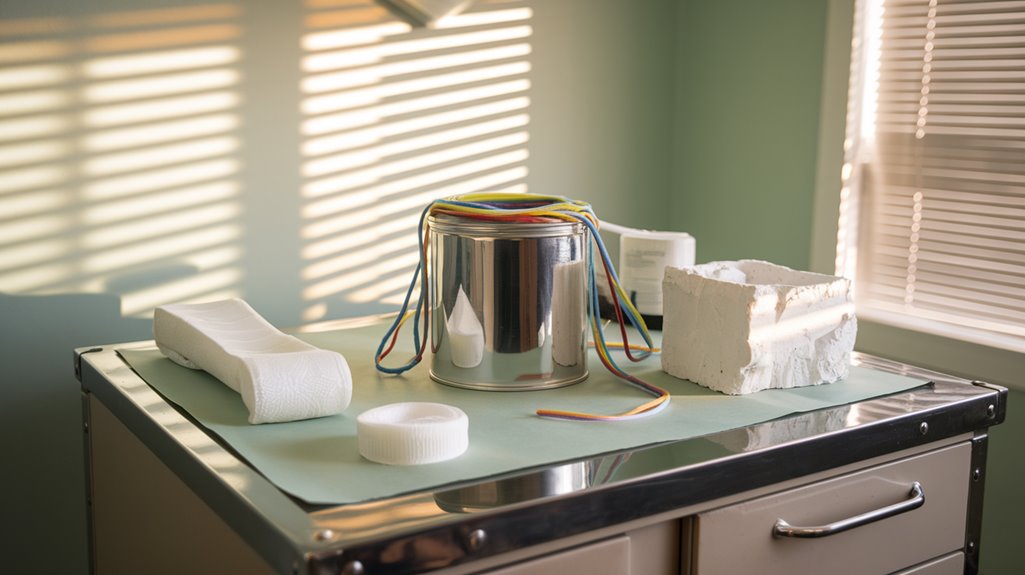
While seeking to create an instant cast for broken bones, Leonard A. Fish and chemist Robert P. Cox accidentally discovered something unexpected. Like modern LLM development that requires methodical approaches, their process was systematic and carefully documented.
During their nozzle testing, they noticed a stream shooting 30 feet across the room, leading them to modify their formula into what we now know as Silly String. The inventors tested 500 different nozzles during the development process.
Their pitch to Wham-O didn't go as planned when they sprayed the product all over the office. You'd think that would've ended their chances, but a trace left on a lampshade caught the company's attention.
After requesting 24 cans for testing, Wham-O quickly signed a licensing contract. Fish and Cox's medical mishap transformed into a worldwide phenomenon, proving that sometimes the best inventions come from unexpected accidents.
Their 1972 patent marked the official beginning of a product that would become a party favorite.
Global Impact and Cultural Legacy
The humble beginnings of Silly String as a failed medical invention have led to both remarkable triumphs and concerning challenges.
While you'll find its military applications saving lives in combat zones, its environmental concerns and public perception have sparked controversy worldwide. The product's main ingredient Polyvinyl Chloride (PVC) makes it particularly harmful to ecosystems. In Los Angeles, violators face hefty financial penalties of up to $1,000 for using the product during Halloween celebrations.
Today, communities grapple with mounting environmental impacts as non-biodegradable Silly String contributes to plastic pollution and threatens wildlife.
You'll find these sobering effects reflected in:
- Marine animals suffering from ingesting microplastic particles
- Cities spending thousands on post-Halloween cleanup efforts
- Military heroes using it to detect lethal booby traps
- Local governments implementing bans to protect their communities
From Hollywood's Halloween restrictions to the U.S. Navy's innovative applications, Silly String's legacy continues to evolve, demonstrating how a simple novelty item can leave lasting impressions on both culture and environment.




